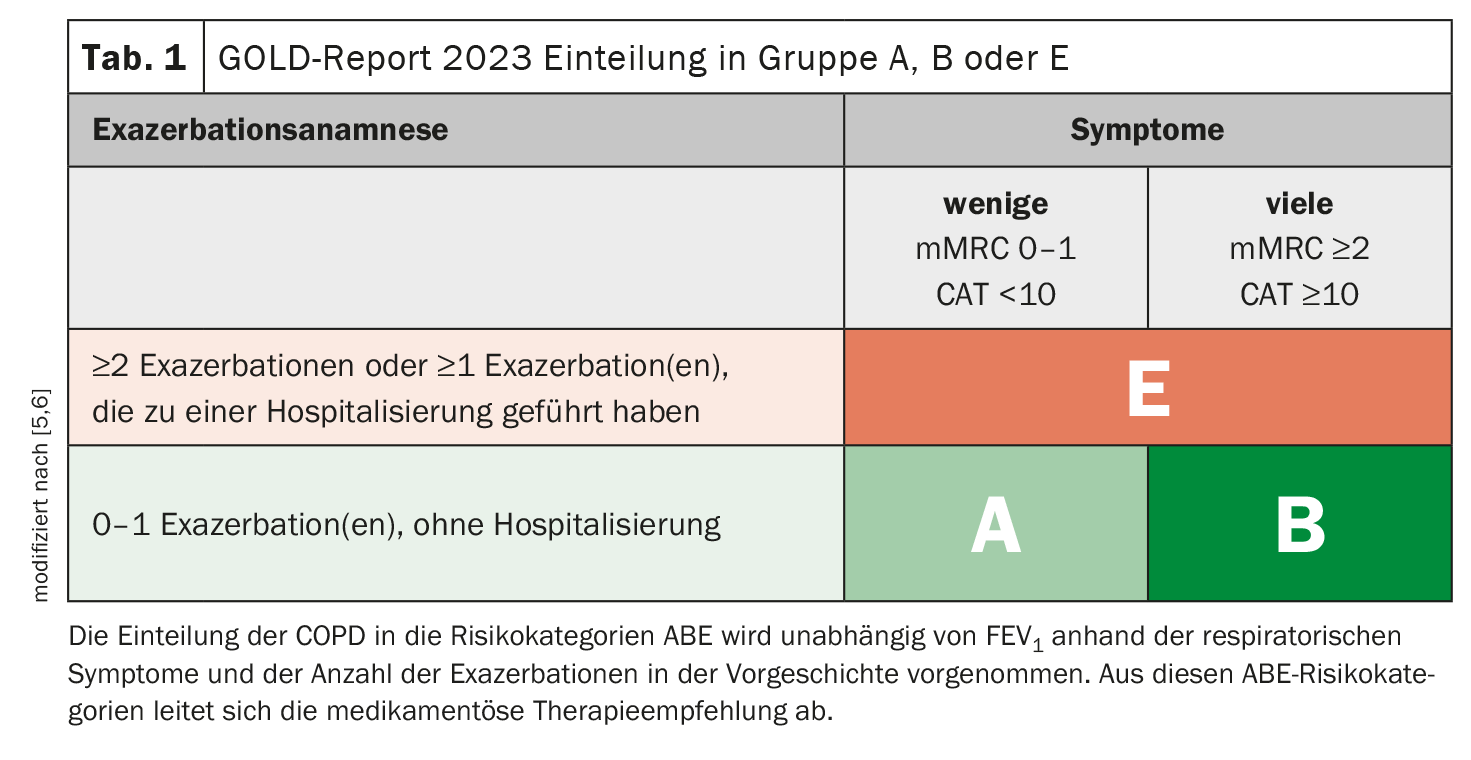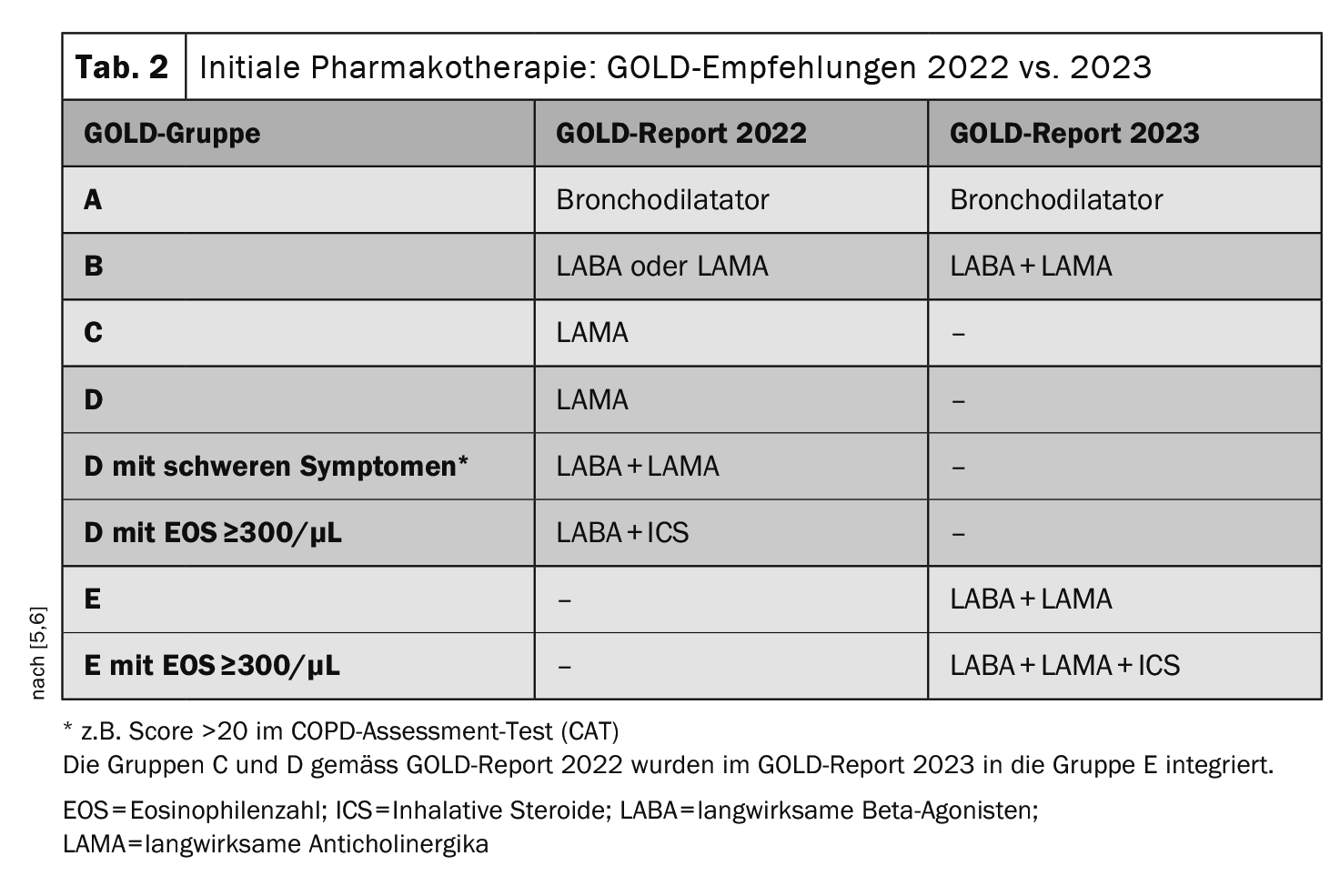A review published in the journal Pulmonary Therapy summarizes and classifies important innovations in the recommendations of the Global Initiative for Chronic Obstructive Lung Disease (GOLD) published in 2023 regarding inhalation therapy for patients with stable chronic obstructive pulmonary disease (COPD).
The goals that can be achieved with drug therapy include reducing exacerbations, reducing mortality and improving quality of life by alleviating symptoms and improving physical performance. [1]. Since 2020, the annually updated GOLD recommendations have pointed out that not only smoking cessation, long-term oxygen therapy and bronchoscopic lung volume reduction have been proven to contribute to a reduction in mortality, but also triple combinations of long-acting anticholinergics (LAMA), long-acting beta-agonists (LABA) and inhaled steroids (ICS) offer a survival benefit compared to LAMA monotherapy or the dual combinations of LABA/LAMA or LABA/ICS, as shown in clinical studies. LABA/LAMA or LABA/ICS offer a survival advantage, as has been shown in clinical studies [2–5]. The correct inhalation technique is crucial for the effectiveness of inhaled pharmacotherapy – the relevant sections on inhalation devices and the requirements for patients and practitioners have also been revised in the 2023 GOLD recommendations [5,6]. The pocket guide for healthcare professionals published by the Swiss Lung Association contains a summary of all the GOLD recommendations for 2023 [8].
Inhaled pharmacotherapy: What are the most important changes?
Groups C and D according to the 2022 GOLD Report were integrated into Group E in the 2023 GOLD Report (Table 1). The current GOLD recommendations advise that patients in group E should initially use a dual combination of LABA/LAMA and that a triple combination should be considered if the eosinophil count (EOS) is ≥ 300/µL [5]. This recommendation differs from that of the GOLD report published in 2022, in which a LABA/LAMA combination was only advocated for severe symptoms (e.g. CAT ≥20) or eosinophil levels ≥300/µL in patients in group D; triple therapy was not mentioned as an initial treatment option for any of the groups [7]. Monotherapy is only recommended for group A patients in the GOLD Report 2023. The previous recommendation to use a LABA/ICS combination for patients in group D with EOS ≥300/µL has also changed. The corresponding changes are shown in Table 2.
Correct inhalation technique: patient education is key
Since 2017, the GOLD reports have explicitly stated that the choice of inhalation device should be tailored to the patient’s capabilities, goals and preferences. In addition, the importance of patient education for a correct inhalation technique was and is emphasized. Practitioners should routinely check that patients are using their inhalation device correctly. The updates in the GOLD Report published in 2023 include a stronger focus on patient requirements with regard to inhalation devices [5]. It should be noted that strength and dexterity are required to operate pressurized metered dose inhalers (pMDIs), load dry powder inhalers (DPIs) and start breath-actuated inhalers (BAIs). Tremor can lead to shaking of the device and loss of dose. While earlier GOLD reports cited age as a risk factor for suboptimal inhaler use, the 2023 report mentions cognitive impairment or reduced manual dexterity as factors to be considered [5]. According to the GOLD recommendations 2023, patients and doctors should pay particular attention to the following points:
- Size and manageability of the device
- Number of steps required to make the device ready for use
- the force required to charge or activate the device
- the inhalation maneuvers required for effective use
- Time required by a device to administer medication
- inspiratory flow, acceleration of the respiratory flow and the inhalation volume
- Time and effort required to clean and maintain the appliance
- the potential benefits of inhalation devices that incorporate “smart” technologies, e.g. sensors that identify problems in real time and provide objective data on adherence and inhalation technique.
Comorbidities such as arthritis, osteoporosis, Parkinson’s disease, neuro-cognitive impairment, neuromuscular weakness, heart disease and obesity may affect the ability to use inhalers effectively, especially if these comorbidities are already at an advanced stage. It should be clarified whether a caregiver is involved and to what extent they have the training and skills to support the patient in the correct inhalation technique. The current GOLD report propagates the “shared-decision-making” principle, which means that the patient should be involved in the choice of inhalation device.
Literature:
- Steurer-Stey C: Guideline COPD; zuletzt revidiert: 08/2023, www.medix.ch, (last accessed 07.02.2024)
- GOLD: Global strategy for the diagnosis, management, and prevention of chronic obstructive lung disease (2020 Report).
- Lipson DA, et al.: Once-daily single-inhaler triple versus dual therapy in patients with COPD. NEJM 2018;378: 1671–1680.
- Vestbo J, et al.: Inhaled corticosteroid containing combinations and mortality in COPD. Eur Respir J 2018; 52: 1801230.
- GOLD: Global strategy for the diagnosis, management, and prevention of chronic obstructive lung disease (2023 Report). https://goldcopd.org 2023-gold-report-2, (last accessed 07.02.2024)
- Terry PD, Dhand R: The 2023 GOLD Report: Updated Guidelines for Inhaled Pharmacological Therapy in Patients with Stable COPD. Pulm Ther 2023; 9: 345–357.
- GOLD: Global strategy for the diagnosis, management, and prevention of chronic obstructive lung disease (2022 Report).
- «COPD Pocket Guide», Diagnostik und Managementsupport für Fachpersonen. Hrsg.: Schweizerische Gesellschaft für Pneumologie und Lungenliga, August 2023. Autorinnen: Prof. Dr. med. Claudia Steurer-Stey, Kaba Dalla Lana dipl. Physiotherapeutin FH, PRT.
HAUSARZT PRAXIS 2024; 19(1): 18–20














